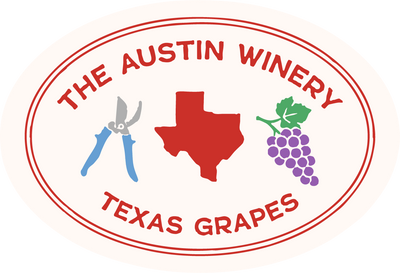One Elm Vineyards
May 23, 2024
One Elm Vineyards is a notable vineyard located in the Texas High Plains AVA (American Viticultural Area), an expansive region in the Panhandle of Texas renowned for its viticulture. Here's a comprehensive overview of the vineyard’s key environmental and biological influences:
Climate and Weather
The Texas High Plains AVA, where One Elm Vineyards is situated, enjoys a continental climate characterized by:
- Hot Summers: Summer temperatures can frequently exceed 90°F (32°C), providing ample heat units required for the ripening of grapes.
- Cool Nights: The significant diurnal temperature variation, with nights dropping to cooler temperatures, helps maintain acidity in the grapes, balancing the sugars and contributing to the complexity of the wines.
- Low Humidity: This region experiences low humidity, which reduces the risk of fungal diseases and allows for more organic and sustainable vineyard practices.
- Wind: The High Plains are known for their consistent winds, which can help in reducing the moisture on grape clusters, further lowering the risk of rot and mildew.
Soil
The soils of the Texas High Plains, including those at One Elm Vineyards, are typically characterized by:
- Sandy Loam and Clay: The dominant soil types are sandy loam and clay loam. These soils provide good drainage while retaining enough moisture to support vine health.
- Caliche Layers: Beneath the topsoil, caliche (a layer of calcium carbonate) is often present, which can impact root penetration and water retention, necessitating careful vineyard management practices.
- High Mineral Content: The soils are often rich in minerals, which can contribute to the unique terroir of the wines, imparting distinct flavors and structural components.
Biological Influences
Several biological factors influence viticulture at One Elm Vineyards:
- Pest Management: The relatively isolated nature of the High Plains and the consistent winds help minimize the prevalence of certain pests. However, vigilance is required to manage common vineyard pests such as grape berry moths and leafhoppers.
- Beneficial Insects: Natural predators and beneficial insects are encouraged through sustainable practices, reducing the need for chemical interventions.
- Cover Crops: The use of cover crops between vine rows is common to manage soil health, prevent erosion, and promote biodiversity. These crops can also attract beneficial insects and improve soil structure.
Viticultural Practices
One Elm Vineyards likely employs several viticultural practices adapted to the High Plains environment:
- Irrigation: Given the low rainfall (around 18 inches annually), supplemental irrigation is essential. Drip irrigation is commonly used to provide precise water delivery to the vines.
- Canopy Management: Techniques to manage the vine canopy are crucial in such a sunny and hot climate to protect grapes from sunburn and ensure optimal ripening.
- Sustainable Practices: With the growing emphasis on sustainability, practices such as reduced chemical usage, soil conservation methods, and promoting biodiversity are likely integrated into the vineyard's operations.
Impact on Wine
The unique combination of climate, soil, and biological influences at One Elm Vineyards in the Texas High Plains contributes to producing wines with distinctive characteristics:
- Balanced Acidity: Thanks to the cool nights, grapes retain good acidity, essential for well-balanced wines.
- Concentrated Flavors: The high temperatures and long growing season help develop rich, concentrated flavors in the grapes.
- Mineral Complexity: The mineral-rich soils impart subtle complexity to the wines, adding to their depth and structure.
In summary, One Elm Vineyards benefits from the distinctive climatic and geological conditions of the Texas High Plains, leveraging these to produce high-quality, unique wines. The combination of hot days, cool nights, mineral-rich soils, and sustainable viticultural practices all contribute to the vineyard's success and the character of its wines.
Leave a comment
Comments will be approved before showing up.
Also in Press
Sign up to get the latest on sales, new releases and more…
© 2025 The Austin Winery.
Powered by Shopify




